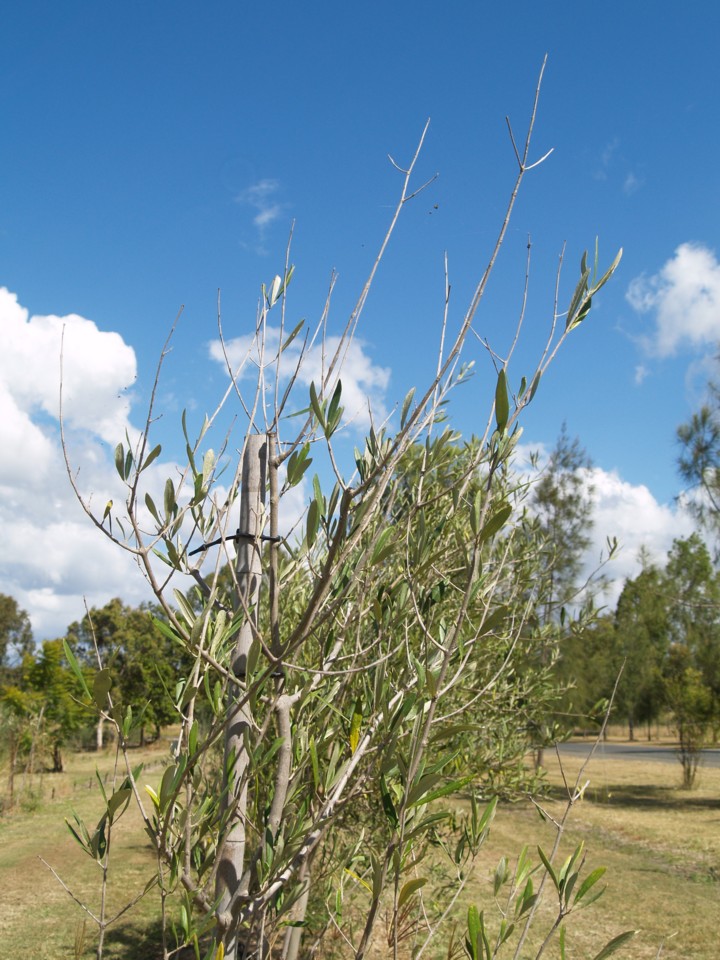Phytophthora root rot has been recorded as a problem in olives throughout the world primarily in situations where prolonged water logging has occurred.
Phytophthora problems, however, have been known to occur in other crops growing in well-drained soils, if the pathogen is present and environmental conditions are favorable.
Leaves of infected trees become yellow and drop, stems wilt and die back from the tips. The tree usually shoots from dormant buds lower down on the tree either from the main trunk or lateral branches. Vascular browning primarily of the xylem tissue is usually present in affected parts of the tree. Cracking and distortion of the trunk can also occur.
In a number of fruit tree crops Phytophthora is adequately controlled with applications of phosphorus acid. Please note it is not Phosphoric acid but Phosphorous acid.
Phosphorous acid is available under a number of trade names including: Fosject 400, Agri-Fos 600, Foli-R-Fos 200 and CM Phosacid 200 and the home garden product… Yates Anti-Rot ( avail at Bunnings)
Phosphorous acid is a preventive treatment, it works primarily by enhancing the plants defense mechanisms and therefore is best applied to the plant before infection occurs. It is a relatively cheap fungicide and has low human toxicity.
On woody perennial crops phosphorous acid is generally applied as a foliar application approximately every 6 weeks throughout the growing season. Label rates are in the vicinity of 2.5ml, 5ml or 10ml per L (air blast sprayer) depending on the concentration of the product (600, 400, 200g/L).
Where there is little foliage left on the tree, a 10% solution can be applied directly to the trunk.
As well as it’s protectant properties phosphorous acid has been shown to enhance root development in some plant species.
Phytophthora is widespread in soil and water throughout Australia, especially in warmer regions that are subject to summer rainfall patterns. Trees being planted into these regions could be treated with phosphorous acid as a preventative measure until they are well-established.
A second approach involves the application foliar fertiliser, especially calcium and boron. These two nutrients are associated with the young growing tips of plants. Plants showing moderate tip dieback symptoms often respond favorably to calcium and boron treatments. Plants suffering from root rot have impaired roots they have trouble taking up nutrients from the soil therefore applying a complete foliar fertilizer to the foliage of the tree can help the tree in the recovery process.
Calcium nitrate 10g/L and Solubor 1.5g/L can be combined and applied to the foliage of the trees on a regular basis (every 6-8 weeks)
General Recommendations:
• Remove affected branches from trees but leave as much healthy growth as possible- do not remove shoots from the lower part of the trunk, allow these to grow but keep them pruned so they don’t become dominant. These can be removed later when the tree has recovered.
• Apply calcium and boron on a periodic basis until trees recover.
• Apply phosphorous acid* on a periodic basis until trees recover.
• Apply a complete Foliar Fertilizer (NPK + trace elements)..this will help supply nutrients to the tree while the roots recover.
• Improve the drainage along the tree rows to enable excess water to run off.


